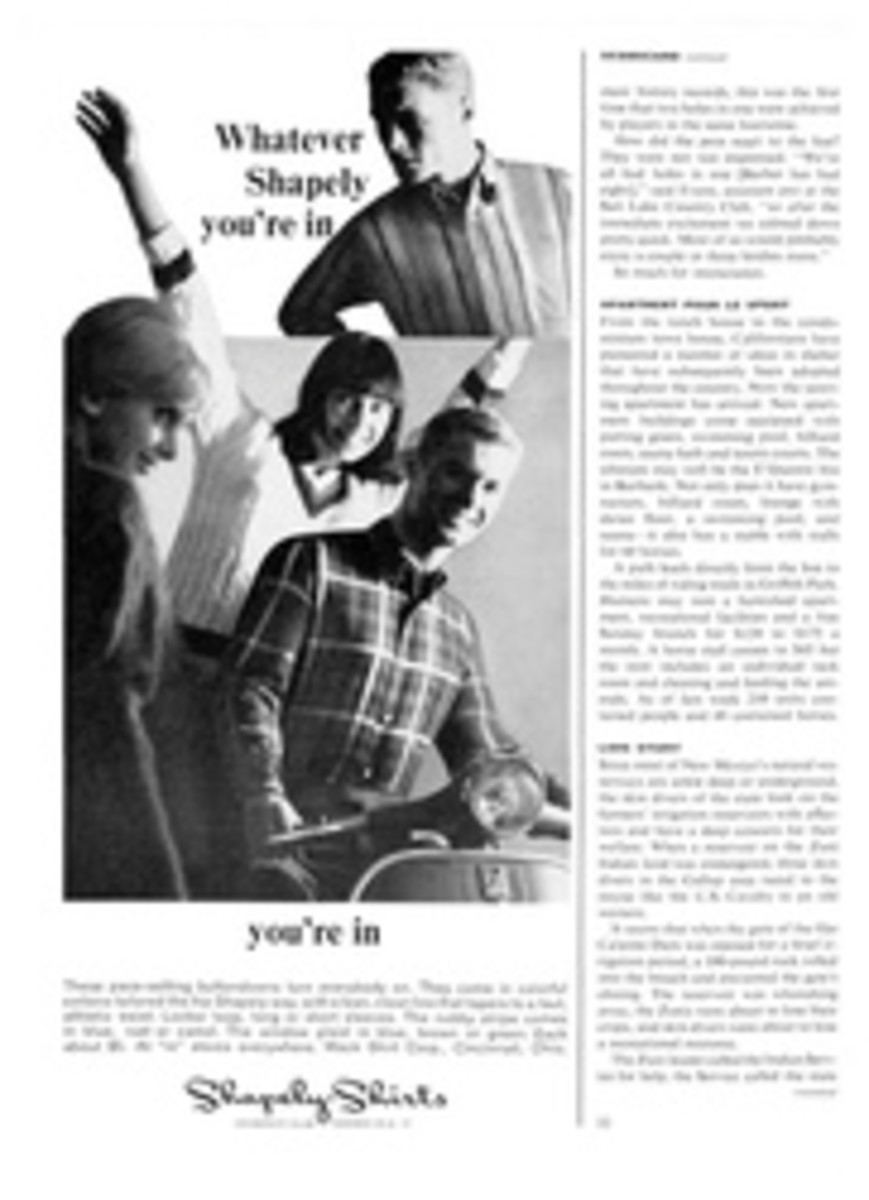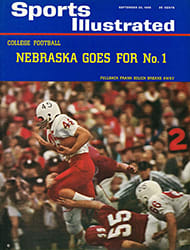
THE HORSE-SHOW WHODUNITS
The traditional mystery surrounding horse shows—that milieu of tweeds and top hats, blue ribbons and blue-bloods—is why the judge gave somebody else's horse first place. Murder and mayhem would appear to be as far removed from the tan bark as Jack the Ripper was from Queen Victoria. But recent happenings in this inbred set would quicken the pulse of Hercule Poirot. By gun, dynamite and poison, three people have been killed; by assorted poisons, so have 25 horses. In addition, a trainer was stabbed (not fatally) in full view of a matinee horse-show crowd and the weapon, though probably a plain old pocket knife and not an exotic jeweled stiletto, has vanished. Consequently, the next few months, during which the long horse-show season reaches its competitive peak, may witness some of its participants performing under a jury's eyes with bars and not ribbons as the stake.
Already in jail is Brigadier General Humberto Mariles Cortés, winner of the 1948 Olympic equestrian gold medal and captain of a team that made the Mexican national anthem almost as familiar to U.S. horse-show audiences as The Star-Spangled Banner. He is charged with last year's fatal shooting of Jesus Velàzquez Méndez, an ex-soldier and bricklayer. Soon after the shooting Mariles vanished across the Rio Grande. He returned to Mexico from Texas last June and surrendered. (It is interesting to note that Texas had a sensational crop of green jumpers this past spring.)
Mariles left Mexico, he says in sworn testimony, because he had evidence that his case would not have been properly investigated. He claims the press already had condemned him as a trigger-happy general, but that he was harassed into shooting Velàzquez in self-defense.
Always a controversial person, Mariles has been beset by extraordinary troubles for more than a decade. At the peak of his fame and ability in 1956 the Mexican government denied him the funds necessary to take his team to the Stockholm Olympics. When private contributors raised the money the government still refused to let him go. Then a mastoiditis condition affected his physical equilibrium and forced his retirement from the show-ring in 1958. Several years later his horses and riders were removed at gun point from the equestrian center on the outskirts of Mexico City that he had built up over 20 years. Although the Mexican Supreme Court upheld his right to the property, Mariles mortgaged his home to found a new club in order to avoid a public scandal. Shortly thereafter 24 of his own and his boarders' horses were found dead. The autopsies revealed poisoning by arsenic and hydrocyanic acid.
Mariles says he was driving about his business in civilian clothes on August 14, 1964, when a late-model Chevrolet with official license plates forced his 1960 Peugeot to the side of the road, where his engine stalled. The other driver, a stranger to him, leaned out and shouted, "Cuckold General, don't obstruct the way." Mariles says he started again down the highway, and once again the other driver—Velàzquez—drew up and forced him from the road, at the same time making obscene gestures. Mariles says Velàzquez leapt from his car with a bricklayer's trowel in his hand and shouted some highly uncomplimentary things about the general's mother. According to Mariles' deposition, he drew his pistol and clouted Velàzquez alongside the head. Velàzquez continued his attack, and Mariles fired.
Mariles says he took the wounded man to a hospital and was assured by a doctor that he would be all right. The general was driven home by his lawyer and Velàzquez died nine days later.
It has since emerged that the bricklayer was not exactly an underprivileged workingman of normal habits. Only 18 days before Mariles shot him, Velàzquez was charged with forcing another car off the road, shooting its two occupants and delivering a blow to the thorax of one of the wounded passengers. He allegedly was under the influence of liquor at that time but somehow was able to produce 40,000 pesos bail.
At his trial Mariles will plead self-defense. His supporters believe Velàzquez was hired to goad the general into an enraged act that would lead to his downfall. His lawyers are reserving some "well-kept and strange things" in the hopes of proving such a frame-up. Neither Mariles nor his attorneys will identify the general's mysterious enemies, but no one doubts that they exist. Many people believe Mariles has been persecuted by political opponents of Miguel Alemàn, former President of Mexico and once the general's chief sponsor.
Meanwhile, back in the U.S., at about the time Mariles was turning himself over to Mexican justice a 22-year-old professional horsewoman named Cherie Rude was killed in dramatic circumstances. On June 14 she was asked by her employer, George Jayne, owner of the Tri-Color Stables of Palatine, a suburb of Chicago, to start his 1965 Cadillac. Jayne was busy with a phone call, and the two were about to drive off on an errand for the stable. A moment after Miss Rude entered the car, it blew up. She was killed by flying debris. The Cadillac had been booby-trapped with dynamite.
"It was meant for me!" said George, and he appeared to have some reason for this assumption. Sinister and mysterious happenings have plagued his life for the last few years, he told a coroner's jury. Jayne says that snipers have fired at him or his employes, his empty stable office was once riddled with 28 bullets, vital records were stolen from his safe and two of his jumpers were poisoned. One horse died of a dose of turpentine, and the other was out of commission through several blue-chip shows.
At the inquest into the death of Cherie Rude, George was asked if he still feared for his life. Yes, he said, as long as his brother was free. The brother in question is Si Jayne, owner of the Idle Hour Stables in Park Ridge, Ill. George and Si have been feuding for several years now, but the origin of the dispute is known only to them. The coroner's jury at the inquest on the late Cherie Rude returned a verdict of murder by an unknown person or persons.
So what about Si, the target of George Jayne's dark hints? Si has always been said to have a hot temper. Once, fuming vengeance, he jumped into his car and chased an "enemy" from Chicago to St. Louis only to be thwarted when his prey, knowing the area, slipped into a stable, grabbed a horse and disappeared cross-country into the night.
At the moment Si is out on $5,000 bond, having been indicted by the Cook County grand jury for "solicitation" of a crime, which carries a maximum penalty of one year. The charge against Si is the result of a fantastic development that came soon after Cherie Rude's death. George Jayne says that two men came to him with a strange story. Si, they claimed, had hired them on June 20th to kill George, but they had decided on a doublecross. They suggested that George disappear briefly, long enough for Si to think he was dead, so they could collect the murder money without having to carry out their messy commitment. They reasoned that Si could hardly sue for the return of his fee, and George should be happy to see Si so neatly rooked. However, George called the police.
The cops put George into protective custody, and his wife, Marian, reported him as a missing person. With the stage thus set, Si was approached by one of the men with a wallet and belt belonging to George as evidence that the deed had been done. Si admitted nothing, but he nevertheless was arrested and indicted. He has pleaded not guilty to the official charge and also has denied having any part in the series of unexplained catastrophes that have befallen his brother. The next installment of the Jayne case is due for a public airing in the Cook County courts sometime this fall.
At about the time Si Jayne was being bound over by the Cook County grand jury, murder struck in the bluegrass country. Mrs. Mary Marrs Cawein, 39, daughter of the internationally famous horse-auctioneer, George Swinebroad, and a member of the Lexington, Ky. show set, was found dead in her home. She and her husband, Dr. Madison Cawein III, had spent the evening with their close friends, Mr. and Mrs. Sam Strother Jr., at the Idle Hour Country Club. After leaving the club Dr. Cawein decided to spend the night at the Strother residence, and Mr. Strother, a Lexington attorney, took Mary Marrs home. The following morning Betty Strother dropped by the Cawein house and found Mrs. Cawein dead. An autopsy showed she had been poisoned, specifically with carbolic acid. Significant quantities of alcohol were found in her body, and there were two needle marks, one on each thigh. Whether the poison was injected or added to a drink is uncertain, but after a five-week hiatus the coroner finally labeled the death homicide. By this time the case had become known locally as "The Carbolic Acid Cocktail" murder.
Following the Keeneland Sales on July 26-27 the Thoroughbred Club of America collected $4,000 in donations as a reward for information leading to the arrest of Mrs. Cawein's killer, but no one has thus far claimed it. "This isn't the sort of murder," said one longtime Lexington resident, "that's committed by the bushy-haired stranger." The Lexington police have come in for much criticism for their failure to open a full-scale investigation until a month after the murder. Rumors say that many of the city's most influential and respected citizens may be involved in the questioning, but there is no talk of imminent arrests. It seems highly possible that the tragic and bizarre death of Mary Marrs Cawein will remain forever unexplained.
Finally, there is a somewhat less violent but still mysterious happenstance that is being dealt with in court—The Case of the Vanishing Blade, or Who Stabbed Tinker Jones at the Devon Horse Show? Jones, you may recall (SI, June 21), formerly was the trainer at Greystone Manor Stables. While he was in the Devon show ring he bumped into a Greystone horse ridden by the new trainer, Redd Crabtree. The Stables' second trainer, Forrest Gibson, was watching from a position at the rail and yelled to Jones to desist. When the class ended, Jones and Gibson tangled at the gate, and in the resulting confusion Jones was stabbed. Gibson, pleading innocence, was arrested, but no knife or other blade was found on him or in the area. A member of the Easttown Township, Pa. police force did take a possible weapon from Greystone Manor's effects, a pair of scissors. But when the officer dropped it into a plastic bag to preserve possible fingerprints, the scissors sliced neatly through the bag's bottom and into the dirt. So that lead, for whatever it was worth, is of dubious value now. Gibson is currently at liberty on a $500 bond, and in preliminary proceedings two witnesses have failed to identify him. This may turn out to be another unsolved affair.
There is no connection, of course, between any of these violent events, except that all of the people have been prominent in the horse-show world. Is it likely that the intense passions aroused in this highly sophisticated and supposedly civilized competition could be a common denominator in all four cases? One would hardly think so, but on the record the horse people make Juan Marichal and his bludgeoning bat look pretty tame.
PHOTO
Awaiting trial in Mexico, General Mariles worries about the public attitude toward his case.
PHOTO
This 1965 Cadillac owned by Chicago's George Jayne was blown up by a gangland-style booby-trap, killing Show Horse Rider Cherie Rude.
PHOTO
Murdered in Kentucky, Mrs. Mary Marrs Cawein was the victim in Carbolic Acid Cocktail Case.

